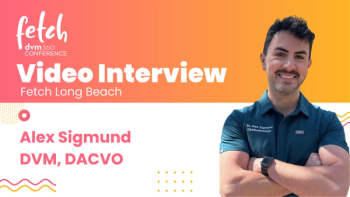
Just Ask the Expert: Is routine measurement of IOP in pets at risk of glaucoma advisable?
Get the answer from veterinary ophthalmologist Juliet Gionfriddo.
Dr. Gionfriddo welcomes ophthalmology questions from veterinarians and veterinary technicians.
E-mail:
With the subject line: Ophthalmology questions
Q: Is there any value in measuring intraocular pressure (IOP) once or twice a year as part of a routine health exam in dogs (or cats) of breeds predisposed to glaucoma? Are the odds of detecting glaucoma early enough to intervene and save vision high enough that this practice is worthwhile and, therefore, justifiable to charge clients for? Also, do you recommend the TonoVet over the Tono-Pen, or vice versa?
Thomas Cole, DVM
Oak Park Veterinary Hospital
Oak Park, CA
A: The answer is more complex than it would seem. Often dogs with abnormal drainage angles will have periodic spikes of increased IOP, and catching the pressure spike would be difficult on routine examinations. The main value in routine examinations would be to track trends in pressure elevation, but daily and hourly variability of IOPs in individual dogs as well as variability in the tonometer operator make this inexact at best. In many predisposed dogs, the pressure increases are acute to subacute, and the optic nerve is damaged before the problem can be detected. This would, in many cases, preclude intervention before diagnosis on routine examination.
The best way to determine whether a dog is predisposed to glaucoma would be to evaluate the drainage angle. This can be done using gonioscopy, ultrasonography (with a 50-MHz probe), or both, in which the amount of drainage angle compromise can be evaluated. Even these techniques are not definitive because dogs with severely compromised angles can live their whole lives without developing glaucoma.
In my opinion, the main value of tonometry for general practitioners lies in the ability to detect pressure increases in dogs with a "red eye." These dogs could have increased IOP but may not yet be visually compromised. I examine quite a few patients with glaucoma that have a history of "red eye" that was diagnosed as conjunctivitis by the referring veterinarian. Their vision could have been saved if the veterinarian had accurately measured IOPs.
Accurately is the buzzword here, as I find that many veterinarians buy tonometers and use them only occasionally. Thus, they have little practice with them and get erroneous readings. It is quite common for them to overestimate the IOP. The instruments are easy to use, but they do have a (short) learning curve. It is also important to maintain them, calibrate them, and use the probes and rubber tips that the companies recommend, not inexpensive imitations.
As for the Tono-Pen vs. TonoVet, they have both been shown to be fairly accurate, so it is a matter of preference. I use the Tono-Pen and like it, while my graduate students prefer the TonoVet. The most important point is to get the instrument and use it-don't just hide it away in a cabinet. Thus, the main value in measuring IOPs in routine examinations would be practice for you, not as a major benefit for the dog.
Juliet R. Gionfriddo, DVM, MS, DACVO
Department of Clinical Sciences
College of Veterinary Medicine and Biomedical Sciences
Colorado State University
Fort Collins, Colo.
The intent of Just Ask the Expert is to address non-urgent medical questions and to share this information through the Web site with other practitioners. The recommendations are for informational purposes only. It is each clinician's responsibility to carefully weigh these recommendations and determine the right course of action for each patient. Please verify any drug dosages discussed. Questions may be edited for style and length.
Newsletter
From exam room tips to practice management insights, get trusted veterinary news delivered straight to your inbox—subscribe to dvm360.




